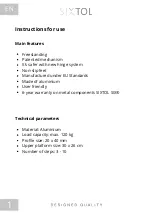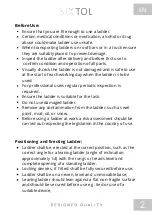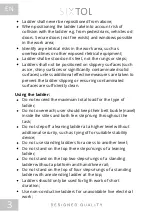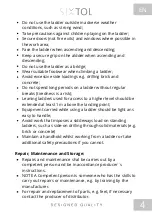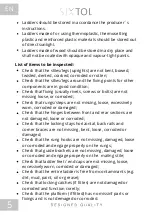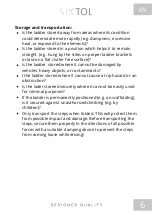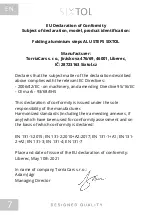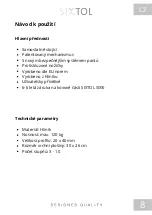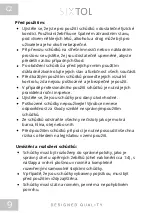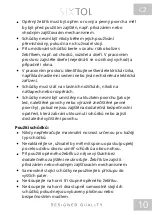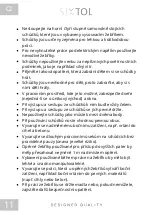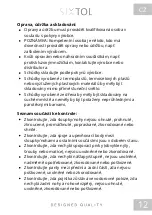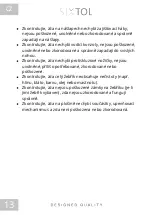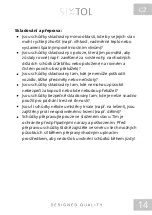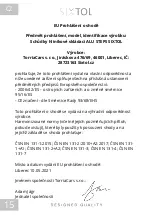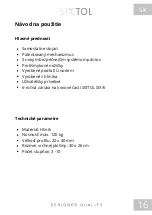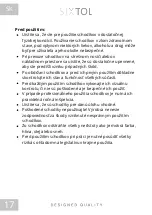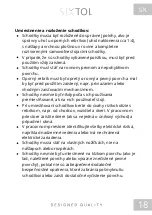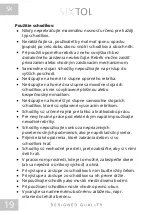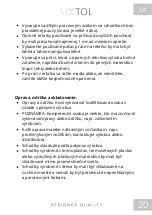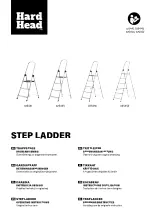
Check that the stiles/legs (uprights) are not bent, bowed,
twisted, dented, cracked, corroded or rotten;
Check that the stlies/legs around the fixing points for other
components are in good condition;
Check that fixing (usually rivets, screws or bolts) are not
missing loose, or corroded;
Check that rungs/steps are not missing, loose, excessively
worn, corroded or damaged;
Check that the hinges between front and rear sections are
not damaged, loose or corroded;
Check that the locking stays horizontal, back rails and
corner braces are not missing, bent, loose, corroded or
damaged;
Check that the rung hooks are not missing, damaged, loose
or corroded and engage properly on the rungs;
Check that guide brackets are not missing, damaged, loose
or corroded and engage properly on the mating stile;
Check that ladder feet / end caps are not missing, loose,
excessively worn, corroded or damaged;
Check that the entire ladder is free from contaminants (e.g.
dirt, mud, paint, oil or grease);
Check that locking catches (if fittes) are not damaged or
corroded and function coretly;
Check that the platform (if fitted) has no missinf parts or
fixings and is not demaged or corroded.
List of items to be inspected:
Ladders should be stored in accordance the producer´s
instructions.
Ladders made of or using thermoplastic, thermosetting
plastic and reinforced plastic materials should be stored out
of direct sunlight.
Ladders made of wood should be stored ina dry place and
shall not be coated with opaque and vapour-tight paints.
5
EN


